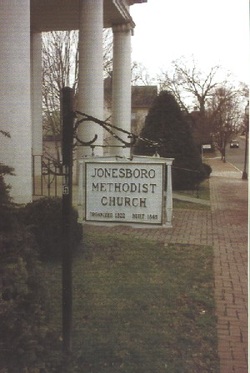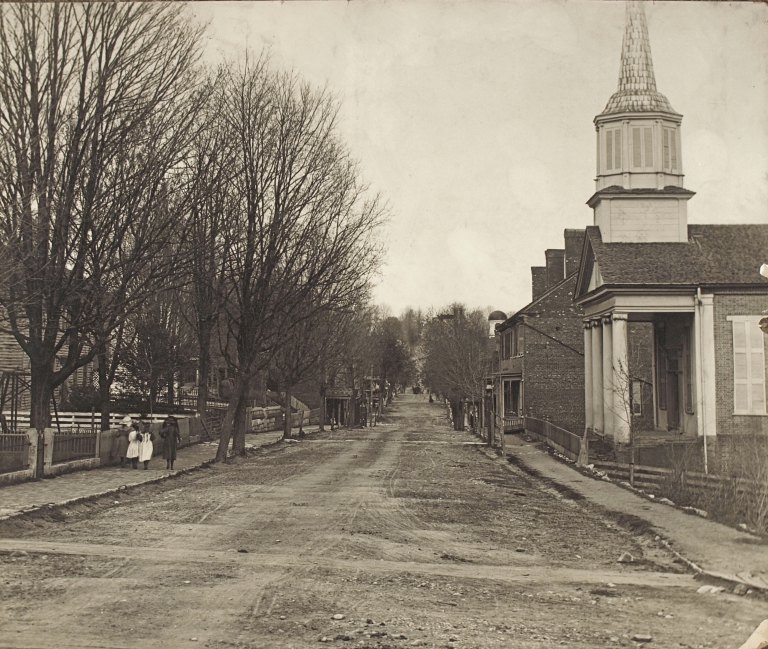|
Jonesborough United Methodist Church has been a part of Tennessee's oldest town since it was first organized as a church in 1822. Work was started on the church structure in 1845, and looked very much the same as it does today.
In the past century and a half Jonesborough has continued to make a faithful witness. It has ministered to the needs of neighbors here at home and around the world. Although Jonesborough has a proud and distinguished history, the greatest focus of attention is placed on how we can minister faithfully now and in the future by fulfilling the great commission of Jesus Christ. |
On the right is the Methodist Church, built in 1845 and the Sisters Row built about
1820 by Samuel Jackson as a home for his three daughters. Photo taken circa 1890.
1820 by Samuel Jackson as a home for his three daughters. Photo taken circa 1890.
Jonesborough United Methodist Church
Established 1822
The beginning of Methodism along with our 200 year History.
Click Here



